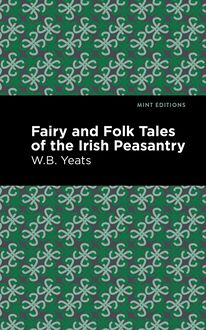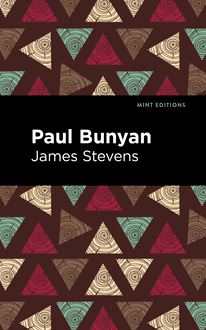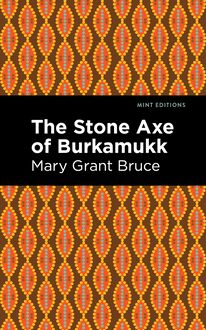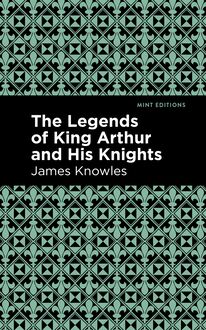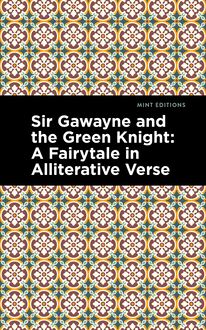-
 Univers
Univers
-
 Ebooks
Ebooks
-
 Livres audio
Livres audio
-
 Presse
Presse
-
 Podcasts
Podcasts
-
 BD
BD
-
 Documents
Documents
-
- Cours
- Révisions
- Ressources pédagogiques
- Sciences de l’éducation
- Manuels scolaires
- Langues
- Travaux de classe
- Annales de BEP
- Etudes supérieures
- Maternelle et primaire
- Fiches de lecture
- Orientation scolaire
- Méthodologie
- Corrigés de devoir
- Annales d’examens et concours
- Annales du bac
- Annales du brevet
- Rapports de stage
La lecture à portée de main
Vous pourrez modifier la taille du texte de cet ouvrage
Découvre YouScribe en t'inscrivant gratuitement
Je m'inscrisDécouvre YouScribe en t'inscrivant gratuitement
Je m'inscrisEn savoir plus
Vous pourrez modifier la taille du texte de cet ouvrage
En savoir plus

Description
The Stone Axe of Burkamukk (1922) is a collection of Aboriginal legends by Mary Grant Bruce. The product of extensive research on the Aboriginal peoples of Gippsland, Victoria, Bruce’s collection was intended to educate Australian settlers regarding the traditions of those they had displaced. Despite drawing criticism for her use of racist stereotypes, Bruce’s hope was that her work would force her fellow settlers to “see that they were boys and girls, men and women, not so unlike us in many ways, and that they could admire what we admire in each other.” Recognizing her prejudices as a product of her time, one can appreciate The Stone Axe of Burkamukk as a record of Aboriginal tales as well as the writer’s status in settler-colonial society. “The camp lay calm and peaceful under the spring sunlight. Burkamukk, the chief, had chosen its place well: the wurleys were built in a green glade well shaded with blackwood and boobyalla trees, and with a soft thick carpet of grass, on which the black babies loved to roll. Not a hundred yards away flowed a wide creek; a creek so excellent that it fed a swamp a little farther on.” As the chief of a prosperous people, Burkamukk is both respected and feared by the inhabitants of the Australian bush. His stone axe, made with a sapling handle by the best craftsman of the tribe, is a symbol of his power and a useful tool for hunting. A generous leader, he often lends his axe to members of his tribe in return for a modest tribute. One day, when a hunting party comes back from a deadly encounter with a legendary kangaroo, Burkamukk swears an oath to avenge his lost tribesman. With a beautifully designed cover and professionally typeset manuscript, this edition of Mary Grant Bruce’s The Stone Axe of Burkamukk is a classic of Australian literature reimagined for modern readers.
Sujets
Informations
| Publié par | Mint Editions |
| Date de parution | 03 août 2021 |
| Nombre de lectures | 0 |
| EAN13 | 9781513297415 |
| Langue | English |
| Poids de l'ouvrage | 2 Mo |
Informations légales : prix de location à la page 0,0450€. Cette information est donnée uniquement à titre indicatif conformément à la législation en vigueur.
Extrait
The Stone Axe of Burkamukk
Mary Grant Bruce
The Stone Axe of Burkamukk was first published in 1922.
This edition published by Mint Editions 2021.
ISBN 9781513295916 | E-ISBN 9781513297415
Published by Mint Editions®
minteditionbooks.com
Publishing Director: Jennifer Newens
Design & Production: Rachel Lopez Metzger
Project Manager: Micaela Clark
Typesetting: Westchester Publishing Services
C ONTENTS F OREWORD I. T HE S TONE A XE OF B URKAMUKK II. W AUNG, THE C ROW III. T HE E MU WHO WOULD D ANCE IV. B OORAN, THE P ELICAN V. T HE S TORY OF THE S TARS VI. H OW L IGHT C AME VII. T HE F ROG THAT L AUGHED VIII. T HE M AIDEN WHO FOUND THE M OON IX. M IRRAN AND W ARREEN X. T HE D AUGHTERS OF W ONKAWALA XI. T HE B URNING OF THE C ROWS XII. K UR-BO-ROO, THE B EAR XIII. W URIP, THE F IRE- B RINGER
F OREWORD
Y ear by year the old black tribes are dying out, and many of their legends and beliefs are dying with them. These legends deal with the world as the blacks knew it; with the Bush animals and birds; the powers of storm, flood, fire, thunder, and magic, and the beings who they thought controlled these powers; with the sun, moon and stars; and with the life and death of men and women.
Many of the old tales are savage enough, but through them runs a thread of feeling for the nobler side of life, so far as these wild people could grasp it. The spirit of self-sacrifice is seen in them, and greed, selfishness and cruelty are often punished as they deserve. We are apt to look on the blacks as utter barbarians, but, as we read their own old stories, we see that they were boys and girls, men and women, not so unlike us in many ways, and that they could admire what we admire in each other, and condemn what we would condemn. The folk-tales of a people are the story of its soul, and it would be a pity if the native races of our country were to vanish altogether before we had collected enough of their legends to let their successors know what manner of people lived in Australia for thousands of years before the white man came. Some valuable collections have indeed been made, but they are all too few; and there must even today be many people, especially in the wilder parts of Australia, who are in touch with the aborigines, and could, if they would, get the old men and women to tell them the stories which were handed down to them when they were children.
In the hope of persuading all young Australians who have the opportunity to collect and preserve what they can of the ancient life and legends of Australia, I have put into modern English a few of the tales which may still be had from some old blackfellow or gin.
M.G.B.
I
T HE S TONE A XE OF B URKAMUKK
Chapter I
T HE CAM P LAY CALM AND peaceful under the spring sunlight. Burkamukk, the chief, had chosen its place well: the wurleys were built in a green glade well shaded with blackwood and boobyalla trees, and with a soft thick carpet of grass, on which the black babies loved to roll. Not a hundred yards away flowed a wide creek; a creek so excellent that it fed a swamp a little farther on. The blacks loved to be near a swamp, for it was as good as a storehouse of food: the women used to go there for lily-pads and sedge-roots, and the men would spear eels in its muddy waters, while at times big flocks of duck settled on it, besides other water-fowl. Burkamukk was a very wise chief, and all his people were fat, and therefore contented.
As blacks count wealth, the people of Burkamukk were very well off. They had plenty of skin rugs, so that no one went cold, even in the winter nights; and the women had made them well, sewing them together with the sinews of animals, using for their needles the small bone of a kangaroo’s hind-leg, ground to a fine point. It was hard work to sew these well, but the men used to take pains to get good skins, pegging them out with tea-tree spikes and dressing them with wood-ashes and fat, which they rubbed in until the skins were soft and supple; and so the women thought that the least they could do was to sew them in the very best way. Being particular about the rugs made the women particular about other things as well, and they had a far better outfit than could be found in most camps. Each woman had a good pitchi, a small wooden trough hollowed out of the soft wood of the bean-tree, in which food was kept. When the tribe went travelling the pitchi was as useful as a suit-case is to a white Australian girl; the lubras packed them with food, and carried them balanced on their heads, or slung to one hip by a plait of human hair, or a fur band; and sometimes a big pitchi was made by a proud father and beautifully carved with a stone knife, and used as a cradle for a fat black baby. Then the women used to weave baskets made of a strong kind of rush, ornamented with coloured patterns and fancy stitches, and each one had, as well, a bag made of the tough inner bark of the acacia tree, or sometimes of a messmate or stringy bark, in which she kept food, sticks and tinder for starting a fire, wattle-gum for cement, shells, tools, and all sorts of charms to keep off evil spirits. They had a queer kind of cooking-pot, in which they used to dissolve gum and manna. These pots were made out of the big rough lumps that grow out of old gum-trees, hollowed out by a chisel made of a kangaroo’s thighbone. The women used to put gum and manna in these and place them near the fire, so that the water gradually heated without burning the wood. There was no pottery among the blacks, and so they could never boil food, but they contrived to make pleasant warm drinks in these wooden pots.
When it came to baking, however, the women of the tribe were well able to turn out toothsome roasts. Their ovens were holes in the ground, plastered with mud, and then filled with fire until the clay was very hot. When the temperature was right the embers were taken out, and the holes lined with wet grass. The food—flesh, fish, or roots—was packed in rough rush baskets and placed in the ovens, and covered with more wet grass, hot stones, gravel, and earth, until the holes were quite air-tight. The women liked to do this in the evening, so that the food cooked slowly all night; and often all the cooking was done in a few big ovens, and next morning each family came to remove its basket of food. And if you had come along breakfastless just as the steaming baskets were taken out, and had been asked to join in eating a plump young bandicoot or wallaby or a fat black fish—well, even though there were no plates or knives or forks, I do not think you would have grumbled at your meal.
The men of Burkamukk’s tribe were well armed. Their boomerangs, spears and throwing-sticks were all of the best, and they had, in addition, knives made of splinters of flint or sharpened mussel-shell, lashed into handles. Some had skinning knives made of the long front teeth of the bandicoot, with the jaw left on for a handle; and they worked kangaroo bones into all kinds of tools. But Burkamukk himself had a wonderful weapon, the only one in all that district—a mighty axe. It was made of green stone, wedge-shaped, and sharply ground at one edge. This was grasped in the bend of a doubled piece of split sapling, and tightly bound round with kangaroo sinews; and the handle thus formed was additionally strengthened by being cemented to the head by a mixture of gum and shell lime. It was not a very easy matter to make that cement. First, mussel shells were burned to make the lime, and pounded in a hollow stone. Then wattle-gum was chewed for a long time and placed between sheets of green bark, which were laid in a shallow hole in the ground and covered with hot ashes until the gum was dissolved, when it was kneaded with the lime into a tough paste. The blacks would have been badly off without that cement, but not all of them would go to the trouble of making it as thoroughly as did the men of Burkamukk’s tribe. All the best workmanship had gone to the manufacture of Burkamukk’s axe, and the whole tribe was proud of it. Sometimes the chief would lend it to the best climbers among his young men, who used it to cut steps in the bark of trees when they wanted to climb in search of monkey-bears or ’possums; or he would let them use it to strip sheets of bark from the trees, to make their wurleys. Those to whom the axe was lent always showed their sense of the honour done them by making payment in kind—the fattest of the game caught, or a finely-woven rush mat, would be laid at the chief’s door. If this had not been done Burkamukk would probably have looked wise next time some one had wished to borrow his axe, and would have remarked that he had work for it himself.
Even though he occasionally lent the axe, Burkamukk never let it go out of his sight. It was far too precious a possession for that. He, too, went hunting when the axe went, or watched it used to prise great strips of thick bark off the trees, and he probably worried the borrower very much by continually directing how it should be handled. Not that the young men would have taken any risks with it. It was the chief’s axe, but its possession brought dignity upon the whole tribe. Other chiefs had axes, more or less excellent, but there was no weapon in all the countryside so famous as the axe of Burkamukk. I doubt whether the Kings of England have valued their Crown Jewels so highly as Burkamukk valued his stone treasure with the sapling handle. Certainly they cannot have found them half so useful.
On this spring afternoon Burkamukk was coming up from the swamp where he had been spearing eels. He had been very successful: Koronn, his wife, walked behind him carrying a dozen fine specimens, and thinking how good a supper she would be able to cook, and how delighted her little boy Tumbo would be; for of all things Tumbo loved to eat eel. Just at the edge of the camp Burkamukk stopped, frowning.
A hunting-party of young men had e
-
 Univers
Univers
-
 Ebooks
Ebooks
-
 Livres audio
Livres audio
-
 Presse
Presse
-
 Podcasts
Podcasts
-
 BD
BD
-
 Documents
Documents
-
Jeunesse
-
Littérature
-
Ressources professionnelles
-
Santé et bien-être
-
Savoirs
-
Education
-
Loisirs et hobbies
-
Art, musique et cinéma
-
Actualité et débat de société
-
Jeunesse
-
Littérature
-
Ressources professionnelles
-
Santé et bien-être
-
Savoirs
-
Education
-
Loisirs et hobbies
-
Art, musique et cinéma
-
Actualité et débat de société
-
Actualités
-
Lifestyle
-
Presse jeunesse
-
Presse professionnelle
-
Pratique
-
Presse sportive
-
Presse internationale
-
Culture & Médias
-
Action et Aventures
-
Science-fiction et Fantasy
-
Société
-
Jeunesse
-
Littérature
-
Ressources professionnelles
-
Santé et bien-être
-
Savoirs
-
Education
-
Loisirs et hobbies
-
Art, musique et cinéma
-
Actualité et débat de société
- Cours
- Révisions
- Ressources pédagogiques
- Sciences de l’éducation
- Manuels scolaires
- Langues
- Travaux de classe
- Annales de BEP
- Etudes supérieures
- Maternelle et primaire
- Fiches de lecture
- Orientation scolaire
- Méthodologie
- Corrigés de devoir
- Annales d’examens et concours
- Annales du bac
- Annales du brevet
- Rapports de stage

